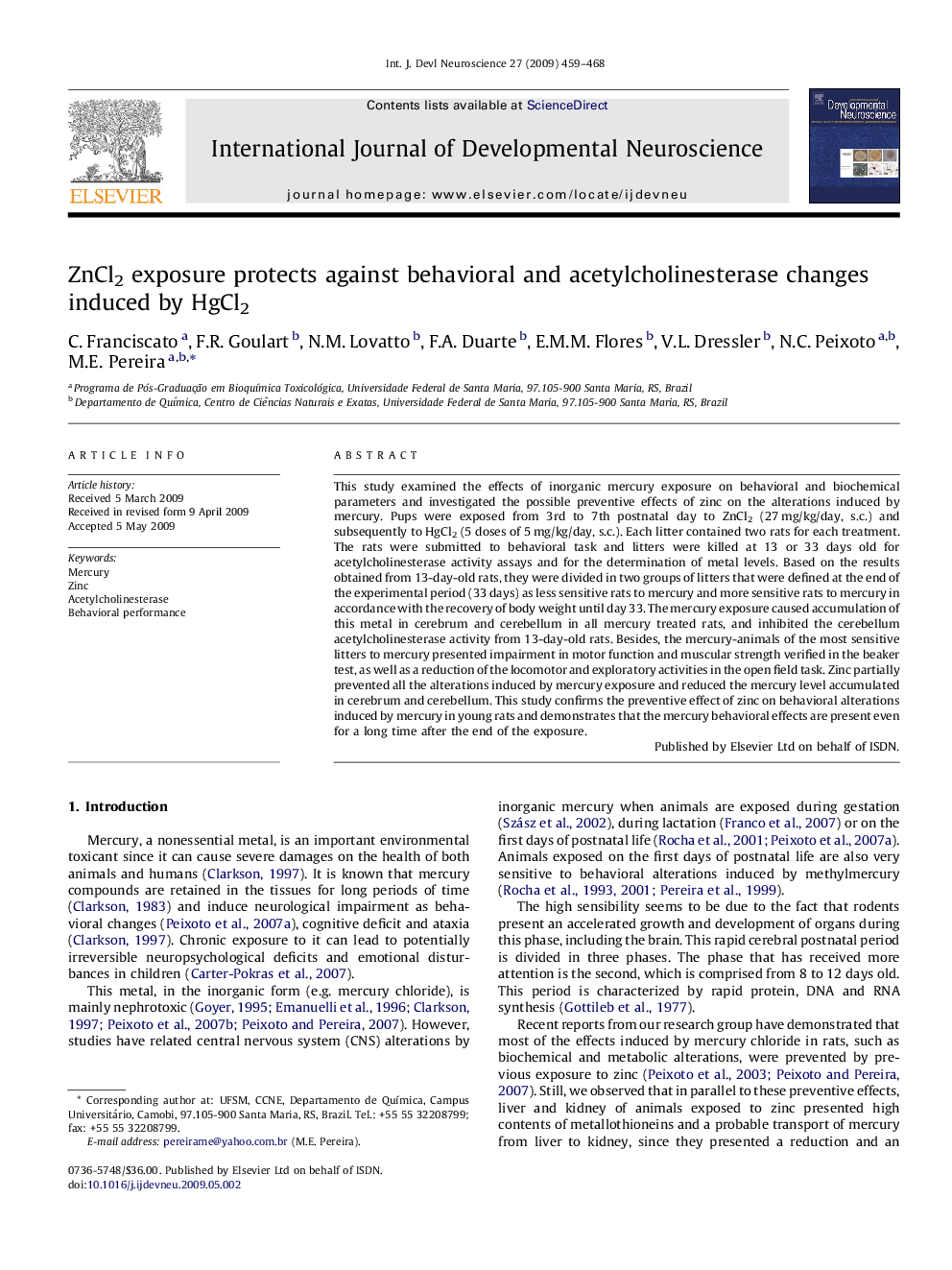| Article ID | Journal | Published Year | Pages | File Type |
|---|---|---|---|---|
| 2786950 | International Journal of Developmental Neuroscience | 2009 | 10 Pages |
This study examined the effects of inorganic mercury exposure on behavioral and biochemical parameters and investigated the possible preventive effects of zinc on the alterations induced by mercury. Pups were exposed from 3rd to 7th postnatal day to ZnCl2 (27 mg/kg/day, s.c.) and subsequently to HgCl2 (5 doses of 5 mg/kg/day, s.c.). Each litter contained two rats for each treatment. The rats were submitted to behavioral task and litters were killed at 13 or 33 days old for acetylcholinesterase activity assays and for the determination of metal levels. Based on the results obtained from 13-day-old rats, they were divided in two groups of litters that were defined at the end of the experimental period (33 days) as less sensitive rats to mercury and more sensitive rats to mercury in accordance with the recovery of body weight until day 33. The mercury exposure caused accumulation of this metal in cerebrum and cerebellum in all mercury treated rats, and inhibited the cerebellum acetylcholinesterase activity from 13-day-old rats. Besides, the mercury-animals of the most sensitive litters to mercury presented impairment in motor function and muscular strength verified in the beaker test, as well as a reduction of the locomotor and exploratory activities in the open field task. Zinc partially prevented all the alterations induced by mercury exposure and reduced the mercury level accumulated in cerebrum and cerebellum. This study confirms the preventive effect of zinc on behavioral alterations induced by mercury in young rats and demonstrates that the mercury behavioral effects are present even for a long time after the end of the exposure.
